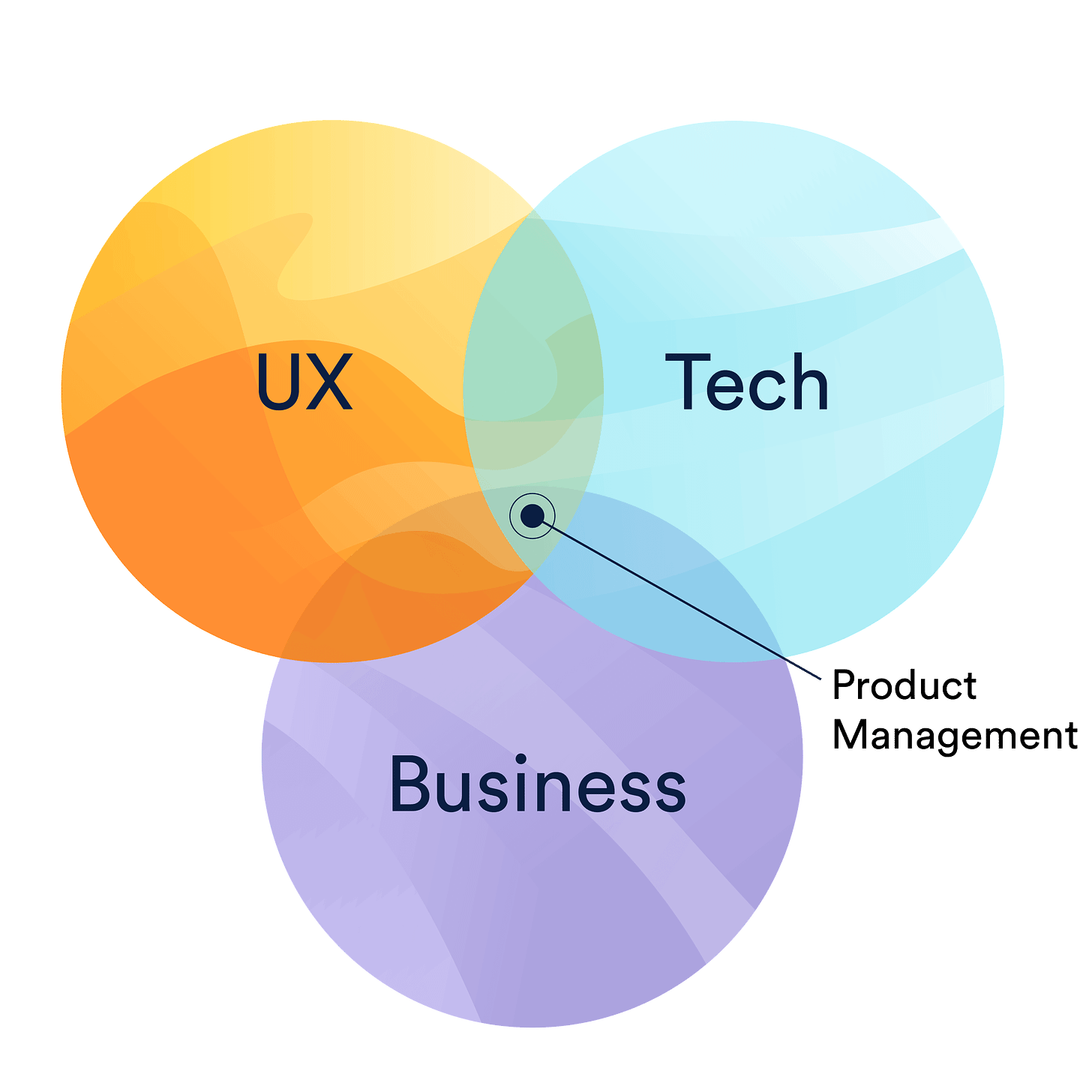How to become a Product Manager
I frequently receive the question “How can I become a Product Manager?” This question can be tackled from two perspectives:
- The career path perspective: What career steps should I take to get a Product Manager role?
- The knowledge/skill perspective: What knowledge and skills should I develop as a Product Manager?
While they are related, today we focus on the second perspective: The concepts and skills Product Managers should be familiar with and master. The purpose of this learning path is to help you position yourself and identify areas for growth.
Fundamentals
You might be familiar with this ‘Venn diagram of Product Management’, placing it at the intersection of Technology, Business and the Customer/User Experience.

Expanding on those, there are five areas Product Managers should be familiar with:
- (Web) Technology: How the internet works/HTTP, Application Architecture, Frontend/Backend Stack, Development Process. Replace this with the respective technologies relevant to your product, e.g. VR, ML, Native Apps…
- Design: Design Thinking, UX, UI, Prototyping, Problem/Solution Space
- Business: Business Model, Revenue/Cost Structure, Financial KPIs, Pricing
- Engineering/Delivery Management: Scrum, Kanban, Backlogs, Estimations
- Data Analytics: Data queries, SQL, Sample size, Statistical significance, Data visualisation
You’ll find a more detailed breakdown of these fundamentals in the visual learning path below. Notice that each of these areas offers a career path in itself. It’s not feasible to be an expert at several of these — Product Managers should be familiar with most of these concepts.
Many Product Managers break into the role from related fields, such as design, engineering or data science. Their expertise and experience enables them to cover some of the Product Management responsibilities directly and even take on adjacent responsibilities when needed. They’ve also worked with or as part of a product team, so they understand what the role requires and how to collaborate with other functions.
Generally, the more mature an organisation, the more likely there is dedicated counterpart for each of these responsibilities. In early-stage companies, Product Managers usually cover a broader set of functions. For example: If there are no Engineering Managers, Product Managers might play a more active role in managing the delivery. If there are no Product Designers, Product Managers might design the product. Product Managers might own the pricing and P&L of the product.
The Fundamentals illustrate where Product Management is situated in an organisation and describe related functions. However it doesn’t tell us much about what a Product Managers actually does, which brings us to…
Product Management Skills
For part two of our Learning Path, let’s dive into the core responsibilities and activities of a Product Manager:
- Product Strategy: Defining a product vision, identifying target customer or user segments, discovering underserved customers needs, tracking industry trends, prioritising strategic opportunities
- Product Discovery: Qualitative and quantitative research, ideation, prototyping, user testing
- Product Delivery: Crafting roadmaps, prioritisation, writing product specs/requirements
- Product Marketing: Crafting documentation, supporting with sales/marketing collateral, product marketing campaigns
- Product Analytics: Specifying tracking requirements, monitoring and analysing usage/adoption data
The biggest leverage Product Managers have is setting the right direction for the product: Setting the right strategy; validating the product direction and specific features through Product Discovery; prioritising the right features for delivery. Product Managers should also ensure that the product is successfully brought to market and monitor its success.
There is a strong overlap between Product Discovery and Design from our Fundamentals. During product discovery, you collaborate closely and share the responsibility of discovering and validating the product with the Design team. If there is no UX/UI team in your organisation, you may cover this by doing most of the customer research and validating solution approaches before the they get built yourself. If you there are Designers on your team, Product Managers can focus more on validating the overall direction of the product and identifying underserved market/user needs, while Designers focus more on the user experience and the interface of the product.
Delivering the product is a joint effort between engineering, design and product management. For the scope of this Learning Path, we focus on the Product Managers’ responsibilities in the delivery process: Prioritising the highest value topics for each cycle; communicating user needs, product specs and acceptance criteria to the entire product team; helping with QA and unblocking any product-related topics that arise during delivery.
Again, the degree to which you cover each of these functions can vary based on the org culture, size and structure as well as the type of product. For example, you might have dedicated Product Analysts and Product Marketers on your team.
Navigating the learning path
If you’re new to Product Management, you can spend a few months learning about the Fundamentals to improve your qualification for the role. Then look for an entry-level role where you can practice your Product Management skills.
If you’re already in a Product Management or related role, you can use the Learning Path to identify topics you want to practice. For example, if you’re in a delivery-focused Product Owner role, you might look for opportunities within your team to contribute to the product strategy, or kick off a Product Discovery initiative with your team.
Going broad vs. deep
The breadth of responsibilities and skills can feel overwhelming. It’s unrealistic to expect to master several of these topics at a level that a specialist does. When you’re starting out, leave yourself freedom to explore a multitude of topics. You can then select a few topics to focus on and dive deeper. Most product managers I know have a generalist or a T-shaped profile with one or two specialisations. Most importantly, don’t be intimidated and take on new responsibilities step-by-step.
The Learning Path
We’ve identified the Fundamentals surrounding Product Management as well as the core responsibilities of Product Managers. Let’s dive deeper: Here’s the full Learning Path to becoming a (SaaS/WebApp) Product Manager.

That’s it for today
I hope the Learning Path helps you level up your skills. It’s definitely helped me position myself and identify areas for growth. I’m excited to share this with the Product Management community and would love to iterate on it. Send me your feedback in the comments.



